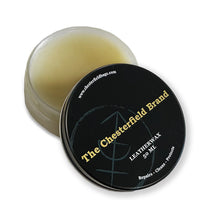Full Grain Leather
The hides used for our products come from different countries, but mainly from India and Brazil. We use cow leather for 90% of our products, the remaining 10% is made from buffalo leather. What many people do not know is that leather is a by-product of the meat industry. For us, this is the perfect opportunity to turn it into a beautiful and sustainable product. By processing these cowhides in different ways, we get different types of leather.
A cowhide can be divided into three layers: the grain layer (the Grain), a middle layer (the Junction), and the hide layer (the Split). The quality and durability differ per layer. For all products of The Chesterfield Brand, 100% Full Grain leather is used, also known as Full Grain. Full Grain leather is the layer with the most natural character; it is the strongest and most durable layer. Since this is the highest quality you can get, it is also the most expensive leather. Full Grain leather is made to last a lifetime, is resistant to rain, and is the only leather type that becomes more beautiful as it is used.
Through years of experience, we have developed our Cow Wax Pull Up leather. This leather is produced with natural wax and oils, which gives a uniquely soft and supple result. Moreover, this type of leather can easily be treated with this wax, which results in a durable product that will last for years.
The tanning proces
During the tanning process the hide is converted into usable leather. This process determines the quality of the leather, how it looks and how it will feel. And leather tanning is not easy. It takes a lot of time and knowledge and no two skins are the same. For us this is not only a nice challenge, it also ensures that every product in our collection is unique!
But, how does this work exactly? The skins that arrive at our leather partners are selected and prepared for the tanning process. For this, the hides are cleaned and soaked in a special immersion bath to remove hair residues and excess dirt. Next, the hides are tanned in large wooden barrels. The structure of certain proteins in the hide is worked to create a suitable and durable piece of leather. Various tanning agents can be used for this process. The majority of leather in the world is tanned chemically. We also use chemically tanned leather for part of our collection. In addition, for an increasing part of our collection, a vegetable tanning method is used (also called Wet White Tanning). This tanning method is more environmentally friendly because only natural products are used. This technique gives the leather a white glow, hence the name 'Wet White Tanning'.
After tanning, the leather is pressed to get the moisture out, after which it can be split. When splitting the leather, the top layer and bottom layers are split from each other. This top layer is the strong and even layer that is suitable for production. After splitting, the leather is washed in the vats once more. This time to create the right colour and to make the structure of the leather smooth. Then it is time to dry the leather. This can be done by pressing the leather or stretching it on grids. In India, we have the option of drying the leather in the sun, which gives the leather an even deeper colour.
After this, the leather is ready for finishing. Literally the finishing touch, because in this last step the finish layer is applied. With our most commonly used Cow Wax Pull Up leather, the wax is added manually during this phase. By using natural oils and waxes instead of dyes and pigments, the leather gets a soft, supple finish. With this technique, we create a durable product that retains its colour and quality for a long time.
















